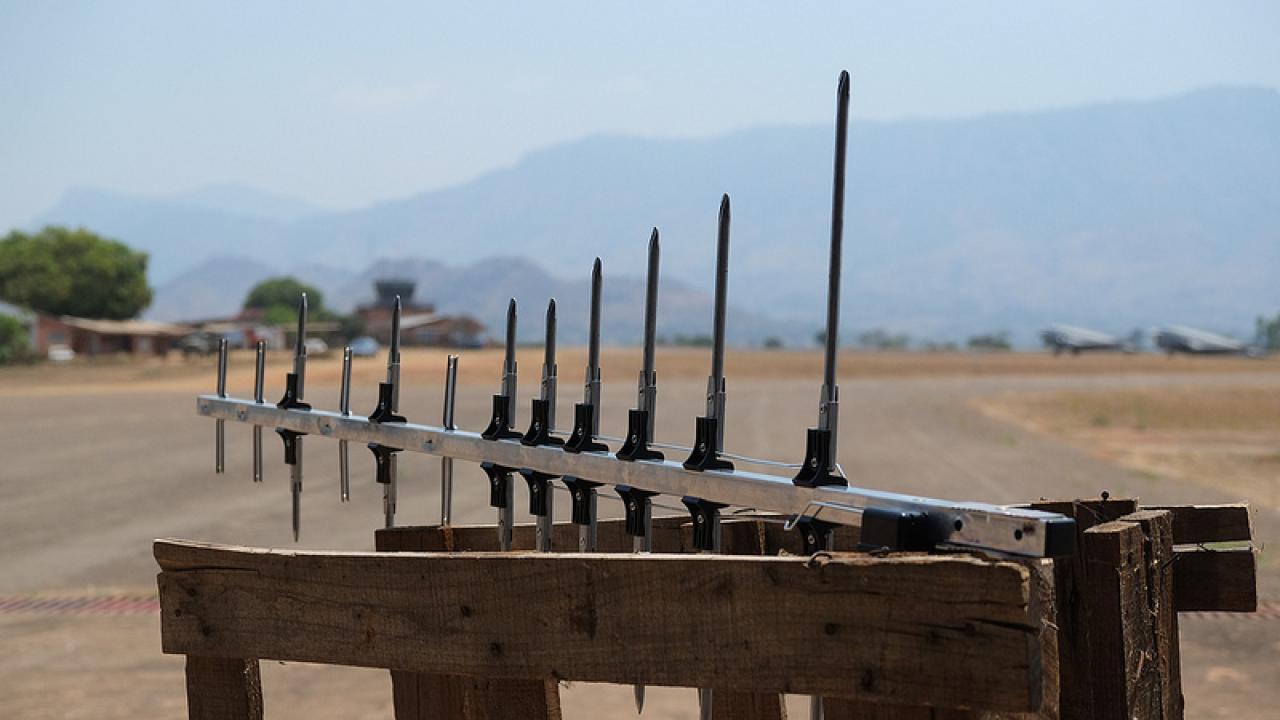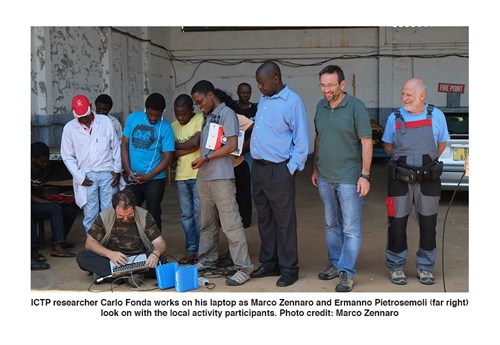
Will a congested information superhighway and the ever-increasing Internet traffic mean that we run out of broadcast space in the virtual world? As the demand for connectivity continues to grow exponentially this could well be a possibility, according to ICTP researchers Marco Zennaro and Ermanno Pietrosemoli. In an effort to address the issue, a team of researchers from ICTP's Telecommunication and Information and Communication Technology for Development laboratory are investigating white-space technology as a means toward efficient use of telecommunication spectra and providing connectivity to areas in rural Africa.
"White spaces are unused frequencies of a broadcasting spectrum, " Pietrosemoli explains. "Rural Africa has lots of spectra that are not being used because it was allocated for TV, but it never got deployed because there was no incentive for TV broadcasters to serve an area where there are no customers or very few customers." The idea of the ICTP team is to use these "fallow" channels in the spectra and provide telecommunication links to institutions in rural Africa.
On a recent visit to Malawi in September 2013, the ICTP team was involved in setting up an antenna that uses white-space technology to provide connectivity to different institutions in rural Malawi. Among the institutions linked was the Seismology Department of the Government of Malawi, which is a research node and partner in the continental AfricaArray project.

"With this link that we provided, the Seismology Department is able to provide seismological data in real time," says Zennaro. "While we are interested in the final users, our main interest at this point is to study how the technology works over time, under different conditions, and be able to advise other institutions, especially in Africa, about telecommunications using white space," he says.
"The project in Malawi has been supported by a grant from the Open Society Foundation. We also now have the support of the Malawi regulatory agency for the spectrum management," adds Pietrosemoli.
For the ICTP team, white-space technology is as much about connecting rural Africa as it is about efficient use of the telecommunication spectrum. Pietrosemoli and Zennaro point out that currently, only about 5% of the allocated spectrum is used efficiently. The deployment in Malawi is a first step toward efficiency, decongesting the information superhighways, providing greater connectivity, and perhaps driving down telecommunication service costs in the long run.
ICTP will be organising a school in March 2014 on "Applications of Open Spectrum and White Spaces Technologies" to introduce participants on how institutions and governments can tap into the potential of this new technology.
















